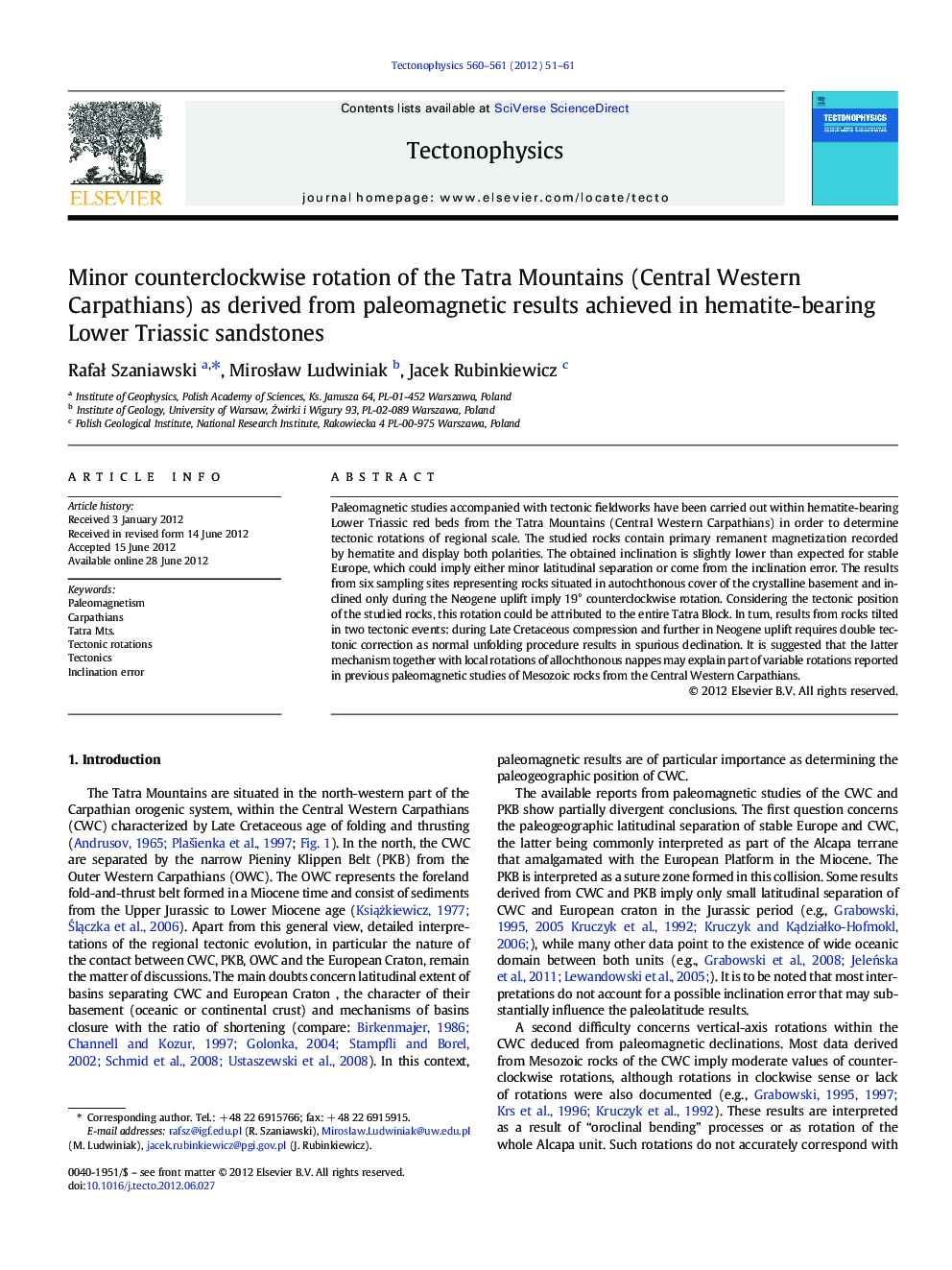| Article ID | Journal | Published Year | Pages | File Type |
|---|---|---|---|---|
| 4692771 | Tectonophysics | 2012 | 11 Pages |
Paleomagnetic studies accompanied with tectonic fieldworks have been carried out within hematite-bearing Lower Triassic red beds from the Tatra Mountains (Central Western Carpathians) in order to determine tectonic rotations of regional scale. The studied rocks contain primary remanent magnetization recorded by hematite and display both polarities. The obtained inclination is slightly lower than expected for stable Europe, which could imply either minor latitudinal separation or come from the inclination error. The results from six sampling sites representing rocks situated in autochthonous cover of the crystalline basement and inclined only during the Neogene uplift imply 19° counterclockwise rotation. Considering the tectonic position of the studied rocks, this rotation could be attributed to the entire Tatra Block. In turn, results from rocks tilted in two tectonic events: during Late Cretaceous compression and further in Neogene uplift requires double tectonic correction as normal unfolding procedure results in spurious declination. It is suggested that the latter mechanism together with local rotations of allochthonous nappes may explain part of variable rotations reported in previous paleomagnetic studies of Mesozoic rocks from the Central Western Carpathians.
► Primary magnetization in hematite bearing Triassic sandstones from Tatra Mts. ► Minor (19°) counterclockwise rotations of Tatra Massive respect to the stable Europe. ► Special unfolding procedure results from multiple deformations of Mesozoic strata.
